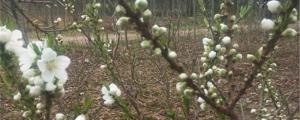Is Palm Tree a Non-Flowering Plant?
Palm trees are recognizable with their long slender trunks and large, green leaves. With over 2,500 species worldwide, palm trees can grow up to 197 feet tall, but one question that many wonder about the plant is whether or not it is a flowering plant.
Palm Tree Flowers
Contrary to common belief, palm trees are flowering plants, although they do not resemble the traditional flowers that one might think of when it comes to flowering plants.
The flowers on a palm tree are tiny and often go unnoticed to the naked eye. Yet, these flowers are crucial in the tree's reproduction process. The palm tree produces both male and female flowers, with the male flowers growing at the top of the tree and female ones at the bottom. Cross-pollination occurs when insects or the wind move the male pollen to the female flowers at the bottom, allowing new seeds to form.
Palm Tree's Reproduction
The palm tree's unique reproductive method is known as angiosperm, or enclosed seeds, which helps explain why some may have thought that palm trees are non-flowering plants.
Once pollinated and fertilized, the flowers on a palm tree turn into fruit. Like the flowers, palm tree fruit may vary in size, shape, and color, depending on the species. Some of the most popular palm tree fruit species include dates, coconuts, and acai berries.
Palm Tree Growth and Care
Caring for a palm tree involves ensuring that it receives plenty of sunshine, well-draining soil, and enough water to keep it healthy. Palm trees also require regular pruning, fertilizing, and maintenance.
It is crucial to note that palm trees are specific to the type of environment they thrive in. If the environment is not suited to their needs, they may not grow as well, possibly leading to plant diseases, pests, or growth problems.
The Importance of Palm Trees
Besides their beauty, palm trees play a crucial role in the ecosystem. Often found growing in tropical and subtropical regions, palm trees help maintain the balance of the environment by providing shelter and food for numerous species of animals and wildlife.
Moreover, palm trees are known for their excellent air-cleaning properties, making them an ideal plant for the indoors or as part of landscaping. Their ability to absorb toxins and release clean oxygen makes them a popular choice for offices, homes, and even large commercial buildings.
In Conclusion
In conclusion, palm trees are indeed flowering plants, even if the flowers are often not visible to the naked eye. Their reproductive process and their unique growth requirements make them a fascinating plant that plays a crucial role in the environment and has many uses for human benefit.

 how many times do yo...
how many times do yo... how many planted tre...
how many planted tre... how many pine trees ...
how many pine trees ... how many pecan trees...
how many pecan trees... how many plants comp...
how many plants comp... how many plants can ...
how many plants can ... how many plants and ...
how many plants and ... how many pepper plan...
how many pepper plan...
































